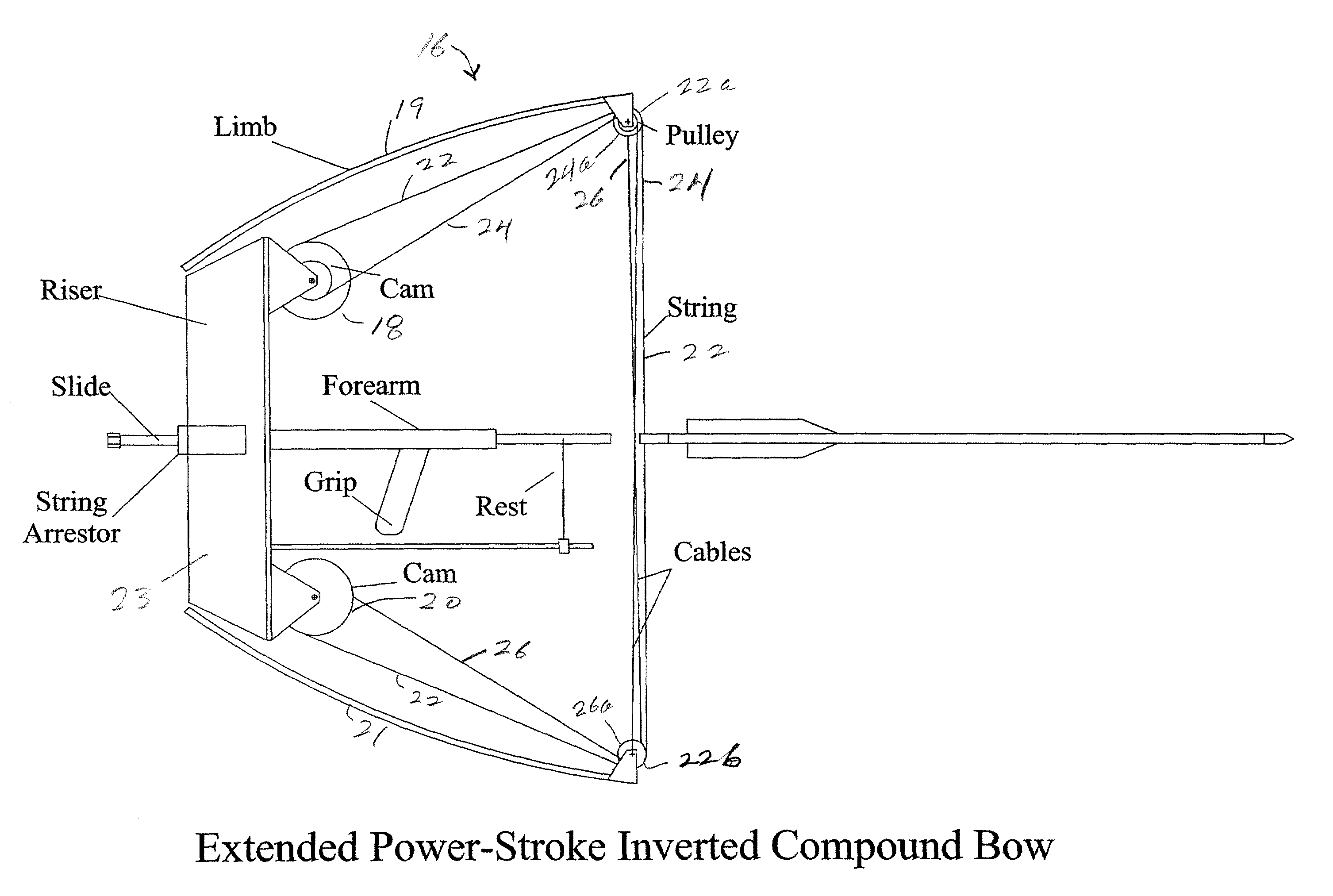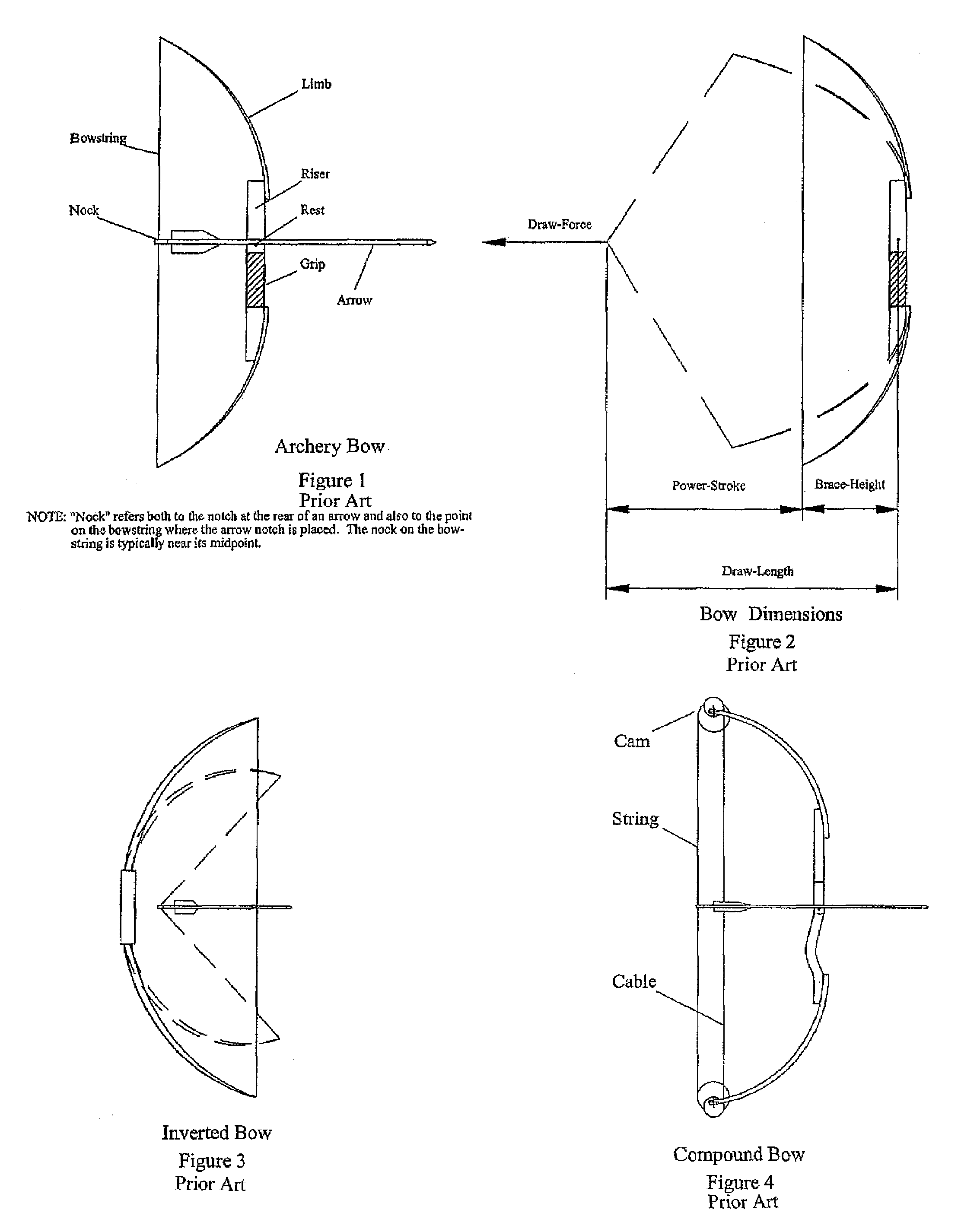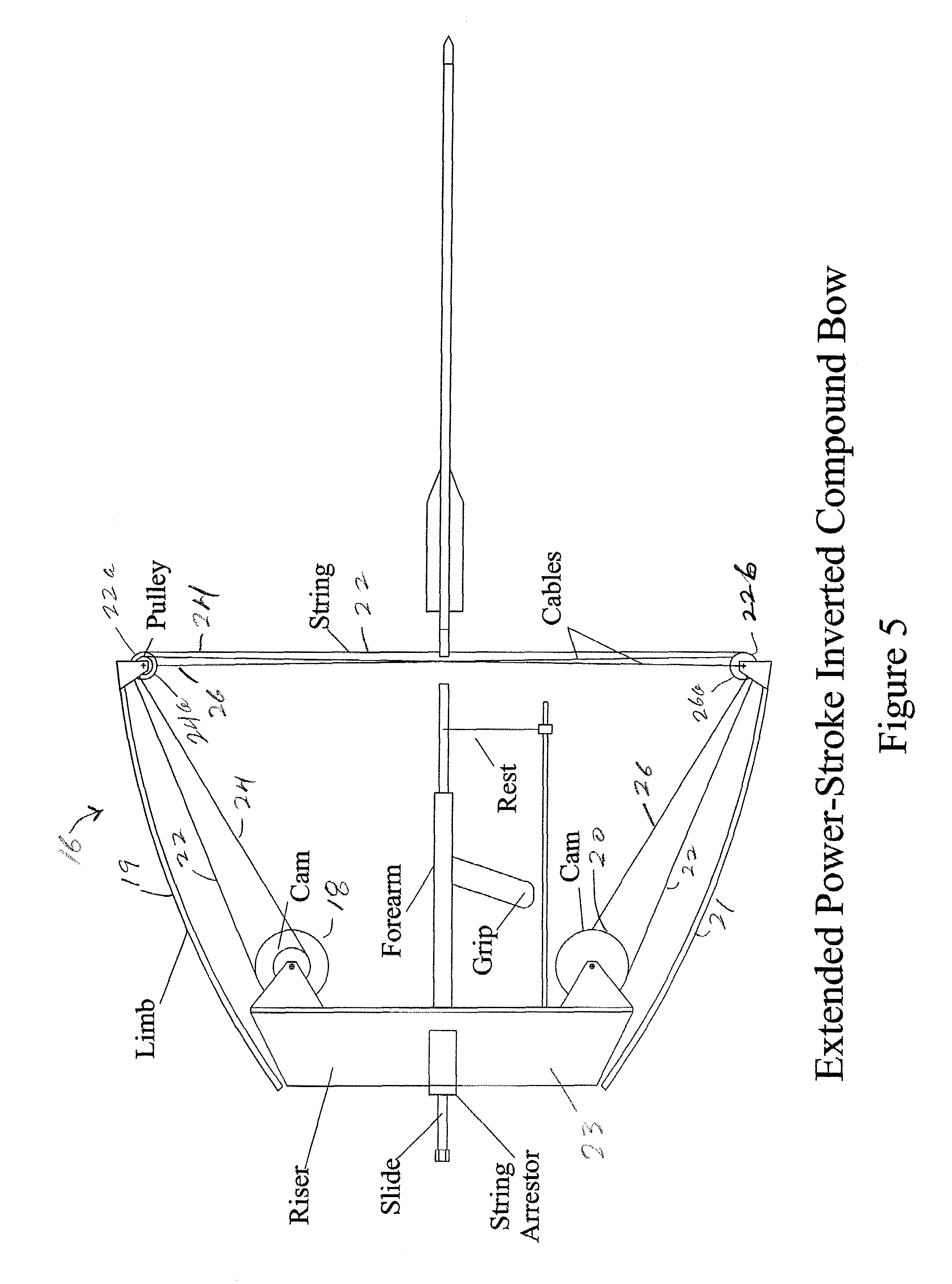Compound archery bow with extended inverted stroke
a compound archery and inverted stroke technology, applied in the field of compound archery bows, can solve the problems of inherently problematic grasping and holding, lack of practical methods for nocking and resting the arrow, and limited energy capacity of traditional bows, so as to achieve the effect of storing and releasing substantially more energy and double the power stroke and energy capacity
- Summary
- Abstract
- Description
- Claims
- Application Information
AI Technical Summary
Benefits of technology
Problems solved by technology
Method used
Image
Examples
Embodiment Construction
[0025]An archery bow according to the disclosed embodiment is shown generally at 16 in at FIGS. 5 and 7, and includes two counter-rotating cams 18 and 20, a bowstring 22, two cables 24 and 26, and four pulleys 22a, 24a and 22b, 26a at outer ends of the limbs 19 and 21 extending outwardly and forwardly from the riser 23. A forearm extends forwardly from the riser and supports a grip for the hand of an archer The cams 18 and 20 of the bow each contain a groove 28 to receive the bowstring 22 and a groove 30 to receive the respective cable 24 or 26. The cams 18 and 20 rotate on axes supported on the riser 23 and revolve through approximately 720 degrees of rotation at full-draw. Therefore, the bowstring 22 wraps around each cam twice in the bowstring groove 28. The grooves 30 for the cables 24 and 26 are helical in shape and also have the capacity for two full wraps. At any point of rotation the string and cable tension are opposite and proportional to the inverse ratio of the radii fro...
PUM
 Login to View More
Login to View More Abstract
Description
Claims
Application Information
 Login to View More
Login to View More - R&D
- Intellectual Property
- Life Sciences
- Materials
- Tech Scout
- Unparalleled Data Quality
- Higher Quality Content
- 60% Fewer Hallucinations
Browse by: Latest US Patents, China's latest patents, Technical Efficacy Thesaurus, Application Domain, Technology Topic, Popular Technical Reports.
© 2025 PatSnap. All rights reserved.Legal|Privacy policy|Modern Slavery Act Transparency Statement|Sitemap|About US| Contact US: help@patsnap.com



